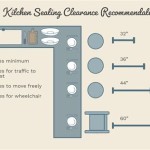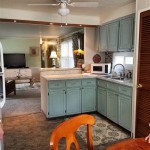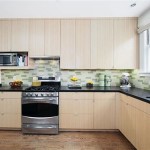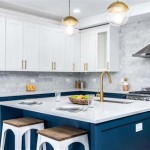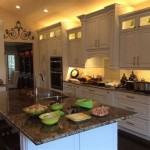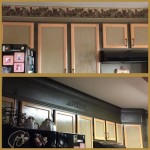Mixed Colors Kitchen Cabinets: A Guide to Stylish and Functional Design
The kitchen, often considered the heart of the home, is evolving beyond purely functional spaces. Homeowners increasingly prioritize aesthetics alongside practicality, leading to innovative design trends. One such trend gaining significant traction is the use of mixed colors in kitchen cabinets. This approach allows for personalization and visual interest, moving away from homogenous, single-tone kitchens. Successfully implementing mixed color schemes requires careful consideration of various factors, including color theory, material selection, and spatial layout.
Mixed color kitchen cabinets offer a way to define different zones within the kitchen. For example, base cabinets can be a deeper, more grounding color, while upper cabinets are painted a lighter shade to create a sense of airiness. Islands, often the focal point of the kitchen, can be highlighted with a contrasting color, drawing attention and adding a unique design element. This deliberate use of color allows homeowners to personalize their kitchen design, reflecting their individual tastes and preferences.
Beyond aesthetics, mixed colors can also enhance the functionality of a kitchen. Strategic color placement can create visual cues, subtly guiding workflow and improving accessibility. For instance, cabinets housing frequently used items can be painted a distinct color, making them easily identifiable. Furthermore, the use of different colors can help conceal certain elements, such as appliances, blending them seamlessly into the overall design scheme.
Understanding Color Theory for Kitchen Cabinets
A fundamental understanding of color theory is crucial when designing a kitchen with mixed color cabinets. Color theory provides a framework for understanding how colors interact with each other, influencing perception and creating specific moods. The color wheel, a visual representation of color relationships, serves as a valuable tool for selecting harmonious color combinations.
Complementary colors, located opposite each other on the color wheel (e.g., blue and orange, red and green), create a vibrant and dynamic contrast. Analogous colors, positioned adjacent to each other (e.g., blue, blue-green, and green), offer a more subtle and harmonious effect. Triadic colors, evenly spaced around the color wheel, provide a balanced and visually stimulating palette.
Beyond selecting the colors themselves, it is also essential to consider their saturation and value. Saturation refers to the intensity of a color, while value refers to its lightness or darkness. Varying the saturation and value of different colors can create depth and dimension within the kitchen. For example, using a highly saturated color for an accent cabinet can draw the eye, while using muted colors for the majority of the cabinets creates a calming atmosphere. The interaction between warm and cool colors should also be considered. Warm colors (reds, oranges, yellows) tend to advance visually, making them suitable for highlighting specific areas. Cool colors (blues, greens, purples) recede, creating a sense of spaciousness.
Neutral colors – whites, grays, beiges, and browns – play a crucial role in mixed color kitchens. They serve as a backdrop, grounding the bolder colors and providing visual relief. A well-chosen neutral can also connect different colors, tying the entire design together. Using a neutral color for the main cabinetry and incorporating pops of color on the island or upper cabinets is a popular and effective approach.
Selecting Materials and Finishes for Mixed Color Cabinets
The choice of materials and finishes significantly impacts the overall aesthetic and durability of mixed color kitchen cabinets. Different materials accept paint and stain differently, and the finish influences the color's appearance and resistance to wear and tear. Common materials for kitchen cabinets include wood (maple, oak, cherry), MDF (medium-density fiberboard), and laminate.
Wood offers a classic and timeless appeal, with each species possessing unique grain patterns and characteristics. Maple is a popular choice due to its smooth surface and ability to accept paint evenly. Oak, known for its prominent grain, provides a more rustic and textured look. Cherry, with its rich reddish-brown hue, lends a touch of elegance and warmth. When using wood cabinets with mixed colors, it is essential to consider the natural variations in the wood grain. These variations can affect how the paint or stain appears, adding character but requiring careful selection to maintain a cohesive look.
MDF, an engineered wood product, is a cost-effective alternative to solid wood. Its smooth surface makes it an excellent choice for painted cabinets, as it minimizes imperfections and ensures a uniform finish. Laminate cabinets offer a durable and low-maintenance option, available in a wide range of colors and patterns. However, laminate cannot be painted, limiting the flexibility of color mixing unless different laminate colors are combined during the manufacturing process.
The finish applied to the cabinets protects the material and enhances its appearance. Common finishes include paint, stain, and varnish. Paint provides a solid, opaque color, while stain enhances the natural grain of the wood. Varnish adds a protective layer and can be applied over paint or stain. The choice of finish depends on the desired aesthetic and the material of the cabinets. For painted cabinets, a durable, water-resistant paint is essential. For stained cabinets, a clear topcoat protects the wood and enhances its luster.
Hardware, such as knobs and pulls, acts as the jewelry of the kitchen, complementing the cabinet colors and adding a finishing touch. Consider the style and finish of the hardware when selecting mixed cabinet colors. For example, sleek, modern hardware in stainless steel or brushed nickel pairs well with contemporary color schemes, while classic hardware in bronze or antique brass complements traditional designs. The hardware finish should also coordinate with other metal elements in the kitchen, such as the faucet and lighting fixtures.
Implementing Mixed Color Schemes in Kitchen Design
Successfully implementing mixed color schemes in kitchen design requires careful planning and consideration of the overall space. The size and layout of the kitchen, the amount of natural light, and the existing architectural features all influence the choice of colors and their placement. A small kitchen benefits from lighter colors, which create a sense of spaciousness, while a large kitchen can handle bolder, more saturated colors.
One common approach is to use a darker color for the base cabinets and a lighter color for the upper cabinets. This creates a grounding effect and prevents the kitchen from feeling top-heavy. Another option is to use a different color for the island, highlighting it as a focal point. The island color can either complement or contrast with the main cabinetry, depending on the desired effect.
Another strategy is to utilize a gradient effect, gradually transitioning from a darker shade to a lighter shade within the kitchen. This creates a sense of depth and visual interest. For example, the base cabinets can be a deep gray, the middle cabinets a medium gray, and the upper cabinets a light gray or white. This subtle transition adds dimension without being overwhelming.
Open shelving provides an opportunity to introduce additional colors and textures into the kitchen. Painted shelving brackets or accessories in contrasting colors can add pops of visual interest. Alternatively, the back of the open shelving can be painted a different color, creating a backdrop for displayed items.
The backsplash is another element that can tie together the mixed cabinet colors. A backsplash tile in a complementary color or a patterned tile that incorporates elements from both cabinet colors can create a cohesive design. Consider the grout color as well, as it can significantly impact the overall appearance of the backsplash.
Lighting plays a crucial role in highlighting mixed cabinet colors. Under-cabinet lighting illuminates the countertops and showcases the base cabinets, while pendant lighting above the island draws attention to the focal point. Consider the color temperature of the lighting when selecting cabinet colors. Warm lighting enhances warm colors, while cool lighting complements cool colors.
Ultimately, the key to successfully implementing mixed color kitchen cabinets to achieve a balanced and harmonious look is achieving balance. Avoid using too many colors, as this can create a chaotic and overwhelming effect. Limit the palette to two or three main colors and use neutral tones to soften the contrast. Pay attention to the proportion of each color used, ensuring that one color dominates while the others serve as accents. By carefully considering these factors, homeowners can create a personalized and stylish kitchen that reflects their individual tastes and enhances their lifestyle.

14 Kitchen Cabinet Color Combinations To Try

26 Two Tone Kitchen Cabinet Ideas That Make A Dazzling Duo

18 Examples Of Two Toned Kitchen Cabinets From Designers
:strip_icc()/twotonedlouisduncan-91b9d7ab761d47bcbf346a6c5e955e42.jpeg?strip=all)
30 Stylish Two Toned Kitchen Ideas From An Expert

Mixed Color Kitchen Cabinets Design Blog
:strip_icc()/goldalamodetwotoned-7898e45ce4004aec878721b187b98301.jpeg?strip=all)
30 Stylish Two Toned Kitchen Ideas From An Expert

Mixing Kitchen Cabinet Colors Story A Blissful Nest

20 Two Toned Kitchen Cabinet Ideas

Amazing Two Color Kitchen Cabinet Ideas That You Ll Love

10 Two Tone Kitchen Cabinet Ideas 2025 Mix And Match
Related Posts

